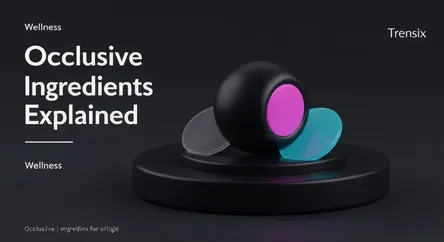Wellness
Occlusive Ingredients Explained

Learn about occlusive ingredients, the skincare trend of 'slugging', and how they protect the skin's moisture barrier for a hydrated complexion.
What is it?
Occlusive ingredients are moisturizing agents that form a protective physical barrier on the skin's surface. Unlike humectants that draw moisture in, occlusives work by sealing the skin to prevent transepidermal water loss (TEWL), which is the evaporation of water from the skin. This barrier helps to lock in existing moisture and can also protect the skin from external irritants like wind and cold air. Common examples of occlusive ingredients include petrolatum (petroleum jelly), mineral oil, silicones (like dimethicone), beeswax, and shea butter. They are often found in thicker creams, ointments, and balms.
Why is it trending?
The popularity of occlusive ingredients has surged due to the viral social media trend known as "slugging." Originating in the K-beauty world, slugging involves applying a thin layer of an occlusive product, typically petrolatum-based, as the final step of a nighttime skincare routine. This trend gained massive traction on platforms like TikTok, where users showcase its effects on achieving dewy, hydrated skin. The broader focus on repairing and maintaining a healthy skin barrier has also contributed to their trendiness. As consumers become more educated about skin health, the role of occlusives in protecting the barrier and enhancing the efficacy of other skincare products is more widely appreciated.
How does it affect people?
For people with dry, dehydrated, or compromised skin barriers, occlusive ingredients can be highly beneficial. They effectively reduce water loss, leading to improved hydration, and can help soothe conditions like eczema. By creating a healing environment, they allow the skin to repair itself. However, for those with oily or acne-prone skin, heavy occlusives can potentially trap oils and dead skin cells, leading to clogged pores and breakouts. It is recommended that individuals with acne-prone skin opt for non-comedogenic or lighter occlusive options like dimethicone. Proper application is key: occlusives should always be applied to clean, damp skin as the last step to seal in moisture and underlying products.